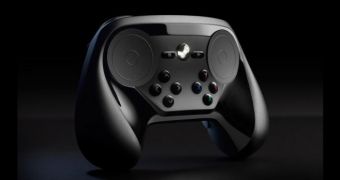At the moment, Microsoft, Sony and Nintendo are the three game console makers that are actually known by the world at large, but Valve wants to join the party, and intends to use 3D printing technology to pull it off.
Valve is known for game titles such as the Half Life series, Portal and Team Fortress, but wishes to enter the hardware market as well.
Making a game console sounds right up its alley, especially since it definitely has the budget for it. That doesn't mean it doesn't think about costs and manufacturing efficiency though.
Fast forward to the present and Valve has decided (from what we can tell) to use 3D printing technology to make the controllers, or their frames and smaller components at least.
In theory, it should be able to produce the outer frame of the console itself, but the controllers are the only ones confirmed for now.
Or, rather, the prototype shown at the Game Developers Conference was 3D printed. Valve even spoke in favor of the technology in general.
Valve is referring to its 3D printed controller as Dog. The gamepad has touch-sensitive controls. It looks bigger in the photo above than it actually is.
Originally, Valve was going to install a touchscreen on it, but eventually jossed that idea in favor of the pads and buttons.
The Valve 3D printed gamepad may very well become the turning point in gaming companies' approach to 3D printing technology.
One might argue that it should have happened before, when it came to producing the shells of their consoles and peripherals if nothing else.
Nevertheless, it seems that the gaming developer community was slower to integrated 3D printing in their operations, slower than they used every other big advancement anyhow.
Valve is actually one of the best names that could have taken up the challenge of incorporating 3D printing in their plans. Valve is the creator of Steam after all, a game platform that distributes and manages thousands of games. Also, it is now developing its own operating system, called Steam OS, which will run the game console in fact.
If it manages to handle 3D printing hardware technology well enough, it could cause the R&D investments and advancements in the sector to skyrocket. Not just through its own efforts, but because its endorsement will likely persuade other game devs to take up 3D printing tools in the near future as well.

 14 DAY TRIAL //
14 DAY TRIAL //